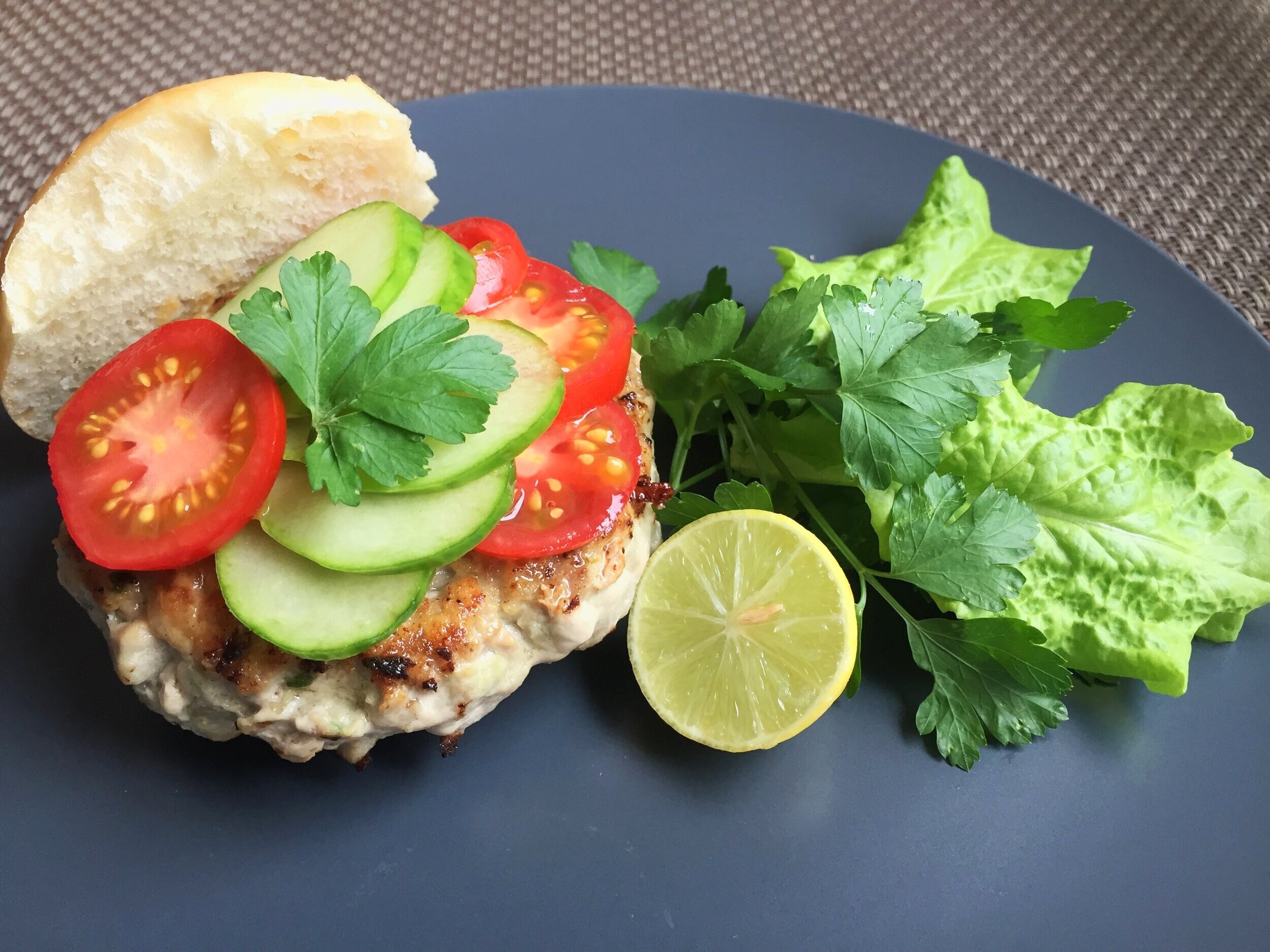Making the Case for Fish Mince
Fettuccine with panko-covered tuna meatballs made with tuna mince. Photo by Kimberly Coelho.
What is fish mince? Well, it is essentially ground up fish, created after the fish has been filleted with the help of a meat grinder or a fish separator. Making fish mince is a way for a greater portion of fish flesh to be utilized that otherwise would have gone to waste after processing.
So why is fish mince or ground fish not a popular item in seafood displays at grocery stores? Actually, fish mince is already present in several of our most familiar processed seafood products, but simply unrecognized. After being mechanically produced at fish processing plants, it is used in formulated sea foods including fish sticks, fish cakes, nuggets and added-value or specialty products such as chowders, patés, fish balls, and gefilte fish. Washed minced fish that has been blended with stabilizing ingredients is called surimi, and is used in popular items such as imitation crab. Other fabricated products also use surimi as a key ingredient to improve texture [1].
High-quality Surimi is made from wild Alaskan pollock that is minced and washed to remove everything but the fish protein. Natural flavorings and ingredients are added to the surimi to produce the final surimi seafood products. The Genuine Alaska Pollock Producers (GAPP) 2019 report also indicates a growing interest in surimi seafood in the U.S., showing a higher percentage of U.S. produced surimi remaining in U.S. markets. Overall U.S. consumption of surimi increased by almost 4,000 mt. Alaskan pollock and Pacific whiting surimi cover nearly 100% of the US domestic production [2].
Let's think beyond the fillet:
If you are a lover of seafood and are a seafood cuisine connoisseur, you are well aware of a number of ways fish mince (ground fish) is used: in dim sum, often mixed with ground pork; in fish cakes, cutlets, and fritters and fish balls; and incorporated into various dishes from soups to skewers.
In Norway, fish balls, or ‘fiskeboller,’ are a staple food and are often served with boiled potatoes and a cream sauce. Haddock and cod are popular white fish used for this preparation.
Customers at Mifune, a New York sushi bar, are served a tuna carcass with shells to scrape the meat from between the ribs, and then build their own hand rolls.
Image by Tamara Beckwith, published in the New York Post, May 8, 2018.
When I think of fish mince, several dishes from around the world come to mind: Vietnamese fish larb, Laotian minced fish soup, Japanese sushi rolls, Chinese dumplings, siu- mai or jaiozi (dimsum), Indian fish kheema fry, and so on. Most of these countries and cuisines are from the Asian continent, where people are accustomed to and even prefer smaller fish, eaten whole or steamed and separated to form fish mince. The culinary concept of eating off-the-bone is a cultural norm. In Asian countries where fish processing takes place, fish mince can be purchased commercially, as underutilized fish species are turned into fish mince using commercial bone extractor machines.
Western consumers, however, prefer larger, portioned fish that are filleted to avoid the occurrence of bones, and trimmed extensively of fat, sinew, and skin. When the fish are first filleted, an additional eight to twelve percent of meat can be separated from the filleting waste, but in processors tailored to western markets, this potential recovered mince often is discarded, if not turned into lower-value items like pet food or fertilizer.
Going back to my initial question; “Why is fish mince not popular in seafood displays?” The answer is very simple. It is not popular in seafood displays in the U.S. because consumers tend to have rigid ideas about what forms of fish are acceptable for eating - and unfortunately, mince has been overlooked as a result.
Now, for those who believe in an ethos of ‘waste not, want not’, there is a growing interest in “spoon meat”, the outcome of when you use a spoon to scrape down the carcass. “Spooning” can leave the carcass almost totally bare of meat, and once gathered this way, you can end up with lots of meat you might have otherwise thrown away. This is essentially minced meat.
On salmon, this minced meat is especially rich, and is excellent whether cooked in burgers and fish cakes/croquettes, or prepared raw in poke and salmon tartare. Spoon meat from a tuna backbone is easily incorporated into delicious ahi tuna rolls, and in my work at local seafood processor Catalina Offshore Products, I developed a recipe for a delicious fish mince burger, using tuna mince, resulting in very positive feedback from customers.
One said, “My kids loved it!”; another added, “It was an easy and tasty dinner for the whole family,”; and another, “The best part - no prep[aration] involved”.
Check out this recipe for Fish Burgers to craft some burgers yourself! And the next time you visit your fishmonger, don’t be shy. Ask if they sell fish mince or prepared fish burgers.
Take it to the next level and ask for a whole frame or backbone, so you can make a tasty dish from your own spoon meat. Most local processors will be happy to accommodate - they know that good spoon meat and mince belongs on our plates, and in our stomachs.
You can use tuna, yellowtail or salmon for this burger recipe.
In under 30 minutes, you’ll have enough burgers to feed a crowd. Freeze the leftover patties, and you’ll have a weeknight dinner ready for the whole family.
Sources
[1] P. Paulsen, J. Nagy (2014), in Encyclopedia of Meat Sciences (Second Edition); Mechanically Recovered Meat.
[2] Genuine Alaska Pollock Producers. Accessed March 02, 2020.




